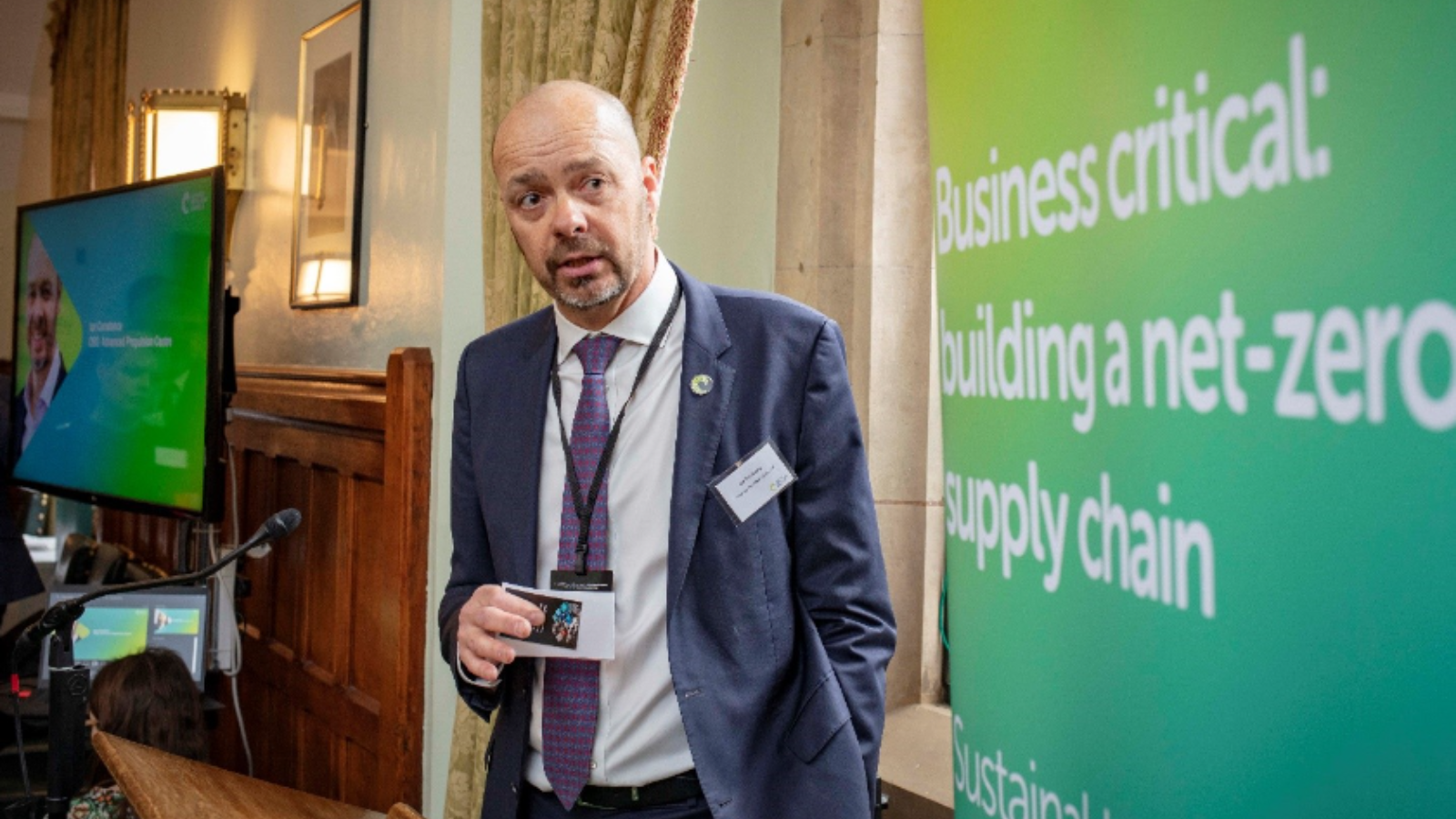Building a net-zero supply chain: navigating the complexities of the transition

We recently hosted an event at the House of Commons where we launched our latest report titled “Business Critical: Building a Net-Zero Supply Chain.”
The critical materials supply chain is central to our transition to zero-emission vehicles and navigating the challenge of achieving net-zero emissions overall. I was pleased to address the gathered industry leaders, experts, and policymakers to explore the complexities of this, from mining to refining, processing, and recycling.
Recognising the need for a shift in mindset and the collaborative effort required, our groundbreaking report provides a detailed overview of the next steps required within the automotive industry, recommending a collaborative and partnership approach to share best practice and help implement upcoming regulation. These are some of my key takeaways from the event and highlights of the core recommendations put forward in our report.
Transitioning to zero emissions
The automotive sector has seen a decade-long focus on electric and zero emission vehicles. The discussion has evolved from first “if and how”, to “when and how”. With the “when” question having been answered, we are now into the “how.” The transition to zero emissions is already underway, although significant challenges remain, particularly in building robust supply chains.
We are living in times of geo-political turmoil that many of us have not known in our working lives. Furthermore, the US Inflation Reduction Act has just introduced additional hurdles which we need to respond to.
Reflecting on the work done by the Automotive Council 18 months ago, four core priorities emerged:
- Transitioning the OEM manufacturing base to zero-emission platforms,
- building a supply chain at scale and pace,
- investing in research and development,
- and aiming for overall industry net-zero emissions.
It is that last point which is now becoming more and more important. While achieving zero emissions at the tailpipe is an important step, it represents just the beginning of a much more complex journey. Achieving net-zero emissions throughout the entire automotive industry requires a comprehensive approach that encompasses every stage of the supply chain, from material extraction and processing to vehicle disposal. Carbon accounting and elimination are central to this effort, making it an immense challenge and is no simple task.
A shift in mindset and collaboration
Acknowledging the scale of the challenge, a shift in mindset is necessary. The transition to net-zero emissions cannot be achieved in isolation; cooperation within the supply chain is crucial. Pre-competitive collaboration on life cycle analysis (LCA) and standards is required to ensure a coordinated effort in the right direction. Which is to say that every level needs to be brought along in tandem, and not leave some behind.
Additionally, small businesses need support in scoping emissions data, as they often face unique constraints compared to larger enterprises. Nobody can be left out of full LCA.
Adapting to regulations and policy changes is crucial for the industry, but it will need smoother processes to make sure that the pace of change is feasible. For example, ensuring permits are issued in a timely manner will avoid delays in business development. Getting permits for recycling can take 18-24 months. That is an impossible amount of time if you are trying to build a business and attract investment.
Lastly, education plays a vital role, ensuring that all stakeholders, particularly policymakers, have a comprehensive understanding of the intricacies involved.
The role of the battery industry
The battery industry is the beachhead for a lot of this, given its rapid growth and the significant impact upcoming regulations and standards will have on it. Tracking and reducing carbon emissions in battery production and recycling processes are paramount. The report emphasises the importance of understanding the entire life cycle of batteries, including recycling and rules of origin for their manufacture.
However, it is essential to broaden our perspective and consider the entire automotive industry, including components such as power electronics, electric machines, door trims, steering wheels, and tyres, in our efforts towards sustainability. We have to do the whole lot.
Business critical
Building a net-zero supply chain requires a coordinated, collaborative effort from all stakeholders within the automotive industry. The APC’s report, “Business Critical: Building a Net-Zero Supply Chain,” provides valuable insights and recommendations to guide the sector to transition its product lifecycle thinking if it is going to deliver net zero.
The report has four key recommendations for industry to adopt and take forward:
- Supply chain collaboration to implement Life Cycle Analysis (LCA), prepare for future regulations, and agree standards and method.
- Support smaller businesses with LCA skills
- Recycling and re-use regulation and permitting review
- Education on emissions from raw materials versus recycled materials to aid decision-making on investment
By recognising the complexities involved and focusing on collaboration, support for small businesses, understanding the coming regulations, and comprehensive education, we can navigate the challenges ahead.
That geopolitical turmoil has been the catalyst to reduce supply chain distances to reduce our carbon footprint. It also means we can use this as an opportunity to restore activities and manufacturing in the UK.
The time is now to think and plan. We have time to get this right and if we do, it poses a real opportunity for UK automotive manufacturers to lead the way.
Sign up to
our newsletter
our newsletter
Sign up to receive our newsletter if you’re interested in hearing about automotive industry news, events, project funding opportunities, green job vacancies and success stories.